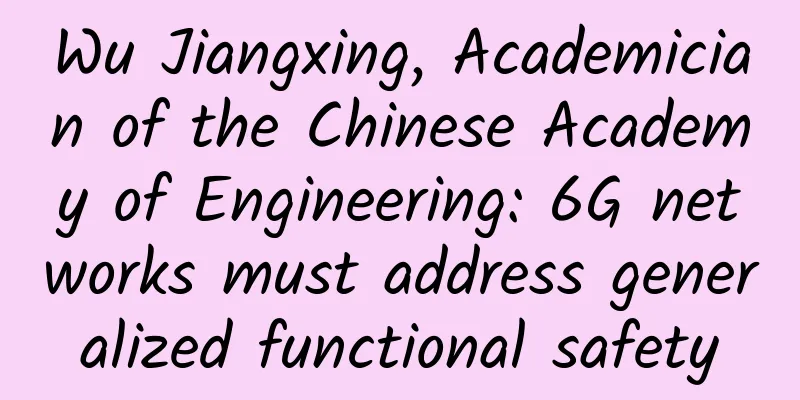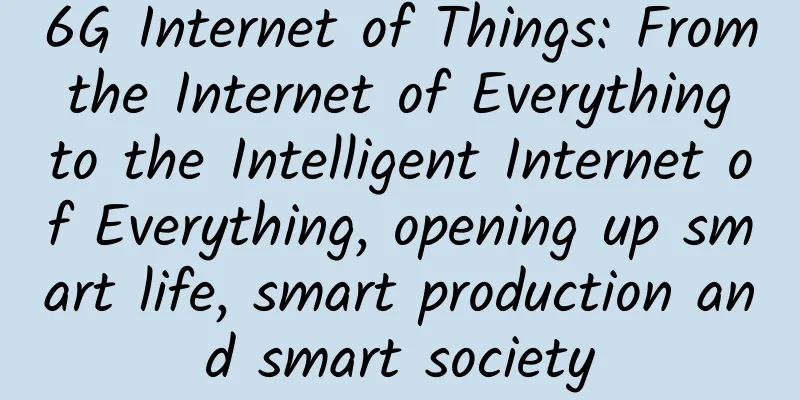Wu Jiangxing, Academician of the Chinese Academy of Engineering: 6G networks must address generalized functional safety

|
Recently, the Future Mobile Communications Forum hosted the "Global 6G Technology Conference" with the aim of building a global scientific and technological cooperation platform and a bridge for collaborative innovation, forming relevant recommendations for promoting 6G research and development, and striving to promote the cultivation of a globally consistent 6G concept. Together, we will create a good environment for global 6G development and contribute to the formation of a globally unified 6G standard and the sustainable development of the information and communication industry. At the roundtable forum on "Key Technologies of 6G Wireless Network Security Architecture" held on March 24, Wu Jiangxing, an academician of the Chinese Academy of Engineering, stated that as an important supporting technology for intelligent connected infrastructure after 2030, 6G can no longer continue the traditional path of pursuing leaps in single technical indicators such as coverage, bandwidth, and latency. Instead, it is necessary to explore and open up a new paradigm for sustainable and coordinated development of multiple objectives such as technical performance, cost investment, energy consumption, safety and reliability, and continuous efficiency. Wu Jiangxing believes that the endogenous security system is the basic architecture, and other security technologies play a role in filling and reinforcing this architecture. "The security architecture of the 6G network must be endogenous to solve the problem of generalized functional safety. If 6G does not have generalized functional safety, then other security technologies are useless, just like sand and soil mixed with cement and sand, which cannot be called concrete." Since the concept of endogenous security was first proposed, it has been gradually accepted and recognized by the industry. In fact, the proposal of the endogenous security paradigm provides the industry chain with a new way of thinking to solve network security problems. "Endogenous security is based on construction technology, rather than built-in or embedded in existing technology." Wu Jiangxing said that endogenous security can accommodate other security technologies and use a variety of integrated means to jointly deal with a variety of potential risks. In Wu Jiangxing's view, AI is not an intrinsic security technology because the analysis results of AI are unexplainable, unidentifiable and unreasonable. Blockchain is not an intrinsic security technology either because it relies on blockchain nodes, and common-mode vulnerabilities and backdoors exist in software and hardware nodes with a market share of >51%. "The essence of generalized functional safety is the expansion and extension of the traditional functional safety (reliability) concept under network attack conditions." Wu Jiangxing said that generalized functional safety is an enabling technology for cyberspace-related technologies, with broad compatibility and openness. It can be integrated with traditional external security protection technologies or systems to form a coordinated defense horizontally, and can be integrated with other security protection technologies or systems on the intelligent network infrastructure platform to form a deep defense vertically. |
Recommend
5G Thinking丨Please give 5G some tolerance and time
[[400629]] Recently, 5G has become a hot topic on...
Five IoT business models that will make you profitable
IoT products have the ability to collect data, cr...
The ultimate form of 5G and its ferryman
Recently, I found that many of my friends have su...
The 5G test in 2019: How to invest if you don’t want to be left behind? You are in a dilemma!
[[251967]] Recently, the Ministry of Industry and...
Internet of Things Development Trend 4 (2019)
Continued from the previous article: "The De...
5G applications are gaining attention, adding new impetus to smart education!
Education is a national priority. my country has ...
RackNerd: $19.99/year KVM-1.8GB/28GB/3TB/Los Angeles Data Center
RackNerd has launched some promotions in Los Ange...
HTTP knowledge points, a must-know in the exam
Detailed introduction to http HTTP is the abbrevi...
German media: Shenzhen has more 5G base stations than the whole of Europe
The article "Why Shenzhen has more 5G base s...
BandwagonHost has launched CN2 GIA at a special price starting from $74.5/year, with 1GB/20G SSD/1TB@1Gbps/multiple nodes available
Bandwagonhost has launched (restocked) a special ...
Byte side: TCP three-way handshake, very detailed questions!
Hello everyone, I am Xiaolin. A reader was asked ...
"Perceived and controllable applications that change on demand" F5 multi-cloud application service innovation online conference transcript
At 10:00 am on December 16, F5, the world's l...
Huawei's Shi Yaohong: The new infrastructure focuses on "foundation" to enable intelligent upgrades in thousands of industries
New infrastructure (i.e. new infrastructure const...
In the digital age, FONE comprehensive budgeting practice sharing in the pharmaceutical industry
In recent years, the pharmaceutical industry has ...









